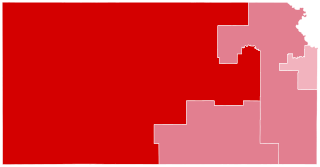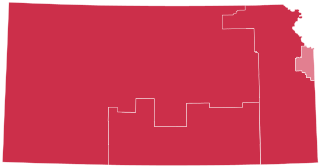
The 1998 United States House of Representatives elections were held on November 3, 1998, to elect U.S. Representatives to serve in the 106th United States Congress. They were part of the midterm elections held during President Bill Clinton's second term. They were a major disappointment for the Republicans, who were expecting to gain seats due to the embarrassment Clinton suffered during the Monica Lewinsky scandal and the "six-year itch" effect observed in most second-term midterm elections. However, the Republicans lost five seats to the Democrats, although they retained a narrow majority in the House. A wave of Republican discontent with Speaker Newt Gingrich prompted him to resign shortly after the election; he was replaced by Congressman Dennis Hastert of Illinois.

The 1858–59 United States House of Representatives elections were held on various dates in various states between June 7, 1858, and December 1, 1859. Each state set its own date for its elections to the House of Representatives. 238 representatives were elected in the new state of Oregon, the pending new state of Kansas, and the other 32 states before the first session of the 36th United States Congress convened on December 5, 1859. They were held during President James Buchanan's term.

The 1854–55 United States House of Representatives elections were held in 31 states for all 234 seats between August 4, 1854, and November 6, 1855, during President Franklin Pierce's term. Each state legislature separately set a date to elect representatives to the House of Representatives before the 34th Congress convened its first session on December 3, 1855.

The Kansas House of Representatives is the lower house of the legislature of the U.S. state of Kansas. Composed of 125 state representatives from districts with roughly equal populations of at least 19,000, its members are responsible for crafting and voting on legislation, helping to create a state budget, and legislative oversight over state agencies. Representatives are elected to two-year terms. The Kansas House of Representatives does not have term limits. The legislative session convenes at the Kansas State Capitol in Topeka annually.

The 2008 congressional elections in Kansas were held on November 4, 2008 to determine who would represent the state of Kansas in the United States House of Representatives, coinciding with the presidential and senatorial elections. Representatives are elected for two-year terms; those elected will serve in the 111th Congress from January 3, 2009 until January 3, 2011.

The 2010 United States Senate election in Kansas took place on November 2, 2010, alongside other elections to the United States Senate in other states as well as elections to the United States House of Representatives and various state and local elections. Incumbent Senator Sam Brownback did not seek a third full term, but instead successfully ran for Governor of Kansas.

The 2010 congressional elections in Kansas were held on November 2, 2010, and determined who would survive the state of Kansas in the United States House of Representatives. Kansas has 4 seats in the House, apportioned according to the 2000 United States census. Representatives are elected for two-year terms; the elected served in the 112th Congress from January 3, 2011, until January 3, 2013.

The 2002 United States Senate election in Kansas was held on November 4, 2002. Incumbent Republican U.S. Senator Pat Roberts won re-election to a second term overwhelmingly. No Democrats filed to run, and Roberts was only opposed by a Libertarian candidate and a Reform Party candidate. This was the only United States Senate election in Kansas in which Pat Roberts won every county in the state.

The 1996 United States elections were held on November 5. Democratic President Bill Clinton won re-election, while the Republicans maintained their majorities in both houses of the United States Congress.

The 2006 United States House of Representatives elections in Kansas were held on November 7, 2006 to determine who will represent the state of Kansas in the United States House of Representatives. Kansas has four seats in the House, apportioned according to the 2000 United States census. Representatives are elected for two-year terms. As of 2022, this was the last time Democrats have won more than one House seat in Kansas.

The 1994 United States House of Representatives elections in Kansas were held on November 8, 1994 to determine who will represent the state of Kansas in the United States House of Representatives. Kansas has four seats in the House, apportioned according to the 1990 United States census. Representatives are elected for two-year terms.

The 1996 United States House of Representatives elections in Kansas were held on November 5, 1996 to determine who will represent the state of Kansas in the United States House of Representatives. Kansas has four seats in the House, apportioned according to the 1990 United States census. Representatives are elected for two-year terms.

The 1936 United States elections were held on November 3, 1936, during the Great Depression. Democratic President Franklin D. Roosevelt trounced Governor Alf Landon of Kansas in a landslide and the Democrats built on their majorities in both chambers of Congress.

The 2012 United States House of Representatives elections in Kansas were held on Tuesday, November 6, 2012, to elect the four U.S. representatives from the state of Kansas. The elections coincided with the elections of other federal and state offices, including a quadrennial presidential election.

The 2004 United States House of Representatives elections in Kansas were held on November 2, 2004 to determine who will represent the state of Kansas in the United States House of Representatives. Kansas has four seats in the House, apportioned according to the 2000 United States census. Representatives are elected for two-year terms.

The 2000 United States House of Representatives elections in Kansas were held on November 7, 2000 to determine who will represent the state of Kansas in the United States House of Representatives. Kansas has four seats in the House, apportioned according to the 1990 United States census. Representatives are elected for two-year terms.

The 2016 United States House of Representatives elections in Kansas were held on November 8, 2016, to elect the four U.S. representatives from the state of Kansas, one from each of the state's four congressional districts. The elections coincided with the 2016 U.S. presidential election, as well as other elections to the House of Representatives, elections to the United States Senate and various state and local elections. The primaries were held on August 2.

The 2022 United States Senate election in Kansas was held on November 8, 2022, to elect a member of the United States Senate to represent the state of Kansas. Incumbent Republican Senator Jerry Moran was first elected in 2010, winning the seat vacated by Sam Brownback, and ran for re-election to a third term in office. Democrat Mark Holland, the former mayor of Kansas City, was Moran's opponent in the general election.

The 2022 United States House of Representatives elections in Kansas were held on November 8, 2022, to elect the four U.S. representatives from the state of Kansas, one from each of the state's four congressional districts. The elections coincided with other elections to the House of Representatives, elections to the United States Senate, and various state and local elections.




















